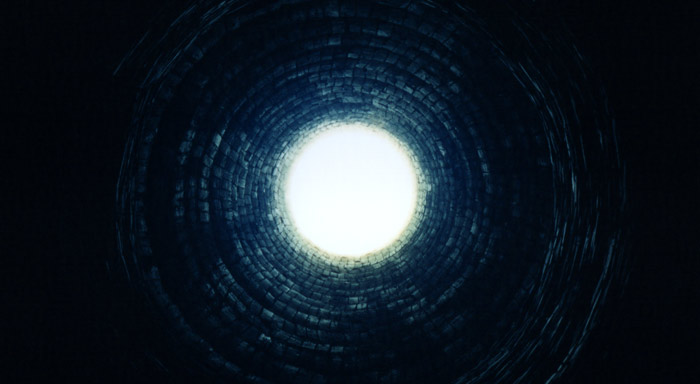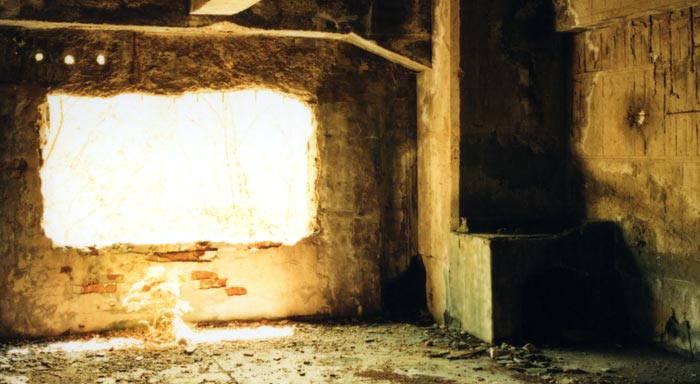大湊鉱山跡
良質な砂鉄が豊富に賦存する下北半島中部の陸奥湾沿岸、そこに築かれた日本特殊鋼管大湊工場は、それまで困難とされてきた砂鉄製錬の工業化に向けて操業を始めました。
創設者の中島統一は当時前例のなかった遠心鋳造法による鋼管製造を考案し、1930 年(昭和 5 年)に自身の研究所を改組して中島鋼筒合資会社(後の中島鋼管株式会社)を設立します。
電気炉製鋼を行う傍ら、木製電柱に代わる製品として鋼製電柱を発表しますが、コンクリート製電柱の普及によって経営は難航しました。
そこで、多用途向けの鋼管製造に方針を変えて研究が進められ、事業化に向けて 1935 年(昭和 10 年)に日本特殊鋼管株式会社が発足されます。
東京の砂町工場は電気炉による鋼塊製造で利益を上げながら、一方で遠心鋳造法による無継目の素管製造を進めました。
翌年に戸田工場を設けて素管の圧延加工が開始されますが、製品歩留まりの低迷から製造法が見直され、穿孔機の導入を余儀なくされます。
同時に、製鋼品質の安定化を図るにあたって鉄資源の開発と一貫生産体制の構築が模索され、下北半島における砂鉄製錬事業が策定されました。
大湊港に隣接する沿岸部では 32 万坪の用地が確保され、30 棟を数える関連施設の建設が進められます。
こうして大湊工場は、1938 年(昭和 13 年)に従業員 810 名体制、日産 150 t の製鉄用回転炉 3 基の運用と年産 10 万 t の計画で操業に入りました。
しかし、耐火煉瓦の毀損を伴う高温製錬は生産性と採算性に乏しく、当初の生産計画を大幅に下回る結果となります。
改良を重ねることで製錬温度の低減に成功しますが、生産量は 5 年間で銑鉄 72,000 t、粒鉄 48,000 t ほどに留まりました。
そして戦況が深まる中、石原製鉄への事業委託を目的として 1943 年(昭和 18 年)に海軍省から供出命令が下され、工場は手放されることとなります。
1943 年閉山
Ominato Mine
Ominato Works, established by Japan Special Steel Tube Co., Ltd., commenced its operations in 1938 on the coast of Mutsu Bay in the Shimokita Peninsula.
Its primary aim was to industrialize iron sand smelting, which was challenging to achieve in conventional methods.
Toitsu Nakajima, the founder of the company, planned the production of steel poles by using the centrifugal casting method, which was unprecedented at that time.
Afterwards, Nakajima reorganized his personal laboratory into Nakajima Steel Pole Limited Partnership, later Nakajima Steel Tube Co., Ltd., in 1930.
The company produced steel ingots through electric furnace steelmaking, and moreover, developed steel utility poles surpassing wooden utility poles in durability.
However, concrete utility poles met the market demand, and consequently, the company was faced with a challenging situation.
Thereupon, Nakajima decided to shift production focus of his company to versatile steel tubes and dedicated himself to technological development for their actualization.
These efforts led to the establishment of Japan Special Steel Tube Co., Ltd. in 1935.
While making a profit from the production of steel ingots through electric furnace steelmaking, Sunamachi Works in Tokyo produced seamless steel tube materials by using the centrifugal casting method.
Although Toda Works, established in the following year, began rolling the tube materials, the works reappraised the production method due to a low product yield rate and unavoidably decided to introduce a piercing machine.
Meanwhile, the company faced challenges in procurement of tube materials due to the unstable quality of its own steelmaking.
Therefore, the iron sand smelting project in the Shimokita Peninsula was planned as a result of the search for the development of iron resources and establishment of an integrated manufacturing system.
The company acquired 106 hectares of coastal land adjacent to Ominato Port and constructed a new steelworks consisting of 30 buildings.
In 1938, Ominato Works commenced its operations with the aim of 100,000 tonnes of production per year, which was intended to be achieved by 810 employees and the use of three rotary kilns with a daily capacity of 150 tonnes.
However, high-temperature smelting with damage of fire bricks resulted in low productivity and profitability, and the performance fell remarkably short of the initial expectations.
Although efforts were made to reduce the smelting temperature for improvement, production was merely 72,000 tonnes of pig iron and 48,000 tonnes of luppe over five years.
Due to the deteriorating wartime conditions, the Ministry of the Navy demanded the provision of the facilities from the company to have Ishihara Iron Company, an anonymous partnership, operate them.
The company unavoidably complied with the demand and left the Ominato Works in 1943.
closure in 1943
Minatomachi, Mutsu City, Aomori
iron sand, limestone

#01
遠心鋳造法は円筒状の鋳型を高速で回転させ、注湯した溶融金属に遠心力を作用させて加圧、密着させる加工法です。
遠心鋳造鋼管の製造は世界的に未開発の分野であり、考案者の中島は実用化にあたって多くの特許を取得しました。
The centrifugal casting method is a technique using centrifugal force to exert pressure on molten metal.
This is achieved by pouring the molten metal into a cylindrical mold spinning at high-speed.
The production of steel tubes using this method was an undeveloped field at that time, and Nakajima, the inventor, obtained numerous patents related to it.
View Details

#02
大湊工場で採用されたバッセー法製錬は粉鉄鉱を原料に用い、石灰石と還元用無煙炭を加えることで銑鉄とセメントクリンカーを生成します。
日本特殊鋼管では原料を砂鉄で代替する新たな技術が開発されました。
The Basset process, adopted by the works, uses fine iron ore and limestone as raw materials and enables the production of cement clinker in addition to pig iron through reduction using anthracite.
The company developed new techniques for using iron sand as an alternative raw material in the process.
View Details

